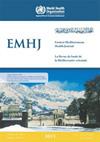根据乳腺癌临床记录测量合并症指数的可行性
IF 1.9
4区 医学
Q3 HEALTH CARE SCIENCES & SERVICES
引用次数: 0
摘要
背景:合并症对乳腺癌的治疗和预后有重大影响。然而,低收入国家关于此类合并症的数据十分有限。目的:评估从医疗记录中提取的合并症数据用于估算伊朗伊斯兰共和国临床乳腺癌登记患者合并症患病率的可行性和准确性。研究方法我们从 400 名患者的病历中收集了查尔森合并症指数(CCI)和埃利克豪斯合并症指数(ECI)中包含的 30 种合并症的数据。通过对随机抽取的 97 名患者进行访谈,计算了从病历中提取的合并症数据的敏感性和特异性。我们使用 CCI 和 ECI 研究了合并症的患病率。数据使用 SPSS 24 版进行分析。结果患者的平均年龄为 51.69 岁(标准差为 12.28 岁)。医疗记录中包含的任何合并症数据与非合并症数据的检测灵敏度和特异度分别为 93.2% 和 69.8%。然而,对于 ECI 中包含的合并症数据,敏感性(86.9%)和特异性(44.4%)均低于 CCI。高血压(144 人,36.0%)和无慢性并发症的糖尿病(77 人,19.3%)是最常见的合并症。CCI(72.2%)患者无并发症的比例高于ECI(44.8%)。结论使用医疗记录构建合并症指数是可行的,而且准确率很高,尤其是在使用 CCI 提取合并症时。要了解伊朗患者的合并症指数与乳腺癌生存率之间的关系,还需要进一步的研究。本文章由计算机程序翻译,如有差异,请以英文原文为准。
Feasibility of measuring comorbidity indices based on clinical breast cancer records
Background: Comorbidities have a significant impact on the treatment and outcome of breast cancer. However, data on such comorbidities from low-income countries are limited. Aim: To evaluate the feasibility and accuracy of comorbidity data extracted from medical records for estimating the prevalence of comorbidities among patients registered in the clinical breast cancer registry of the Islamic Republic of Iran. Methods: We collected data from the medical records of 400 patients on 30 comorbidities included in the Charlson Comorbidity Index (CCI) and Elixhauser Comorbidity Index (ECI). The sensitivity and specificity of comorbidity data extracted from medical records were calculated using data from interviews with 97 randomly selected patients. We studied the prevalence of comorbidities using the CCI and ECI. Data were analysed using SPSS version 24. Results: The mean age of patients was 51.69 SD 12.28 years. The sensitivity and specificity of medical records for detecting any comorbidity data contained in CCI versus non-comorbidity were 93.2% and 69.8%, respectively. However, for the comorbidity data included in ECI, both sensitivity (86.9%) and specificity (44.4%) were lower than in CCI. Hypertension (n = 144, 36.0%) and diabetes without chronic complications (n = 77, 19.3%) were the most prevalent comorbidities. A higher proportion of patients had no comorbidity with CCI (72.2%) than with ECI (44.8%). Conclusion: It is feasible to construct a comorbidity index using medical records with high accuracy, especially when we extract comorbidities using the CCI. Further studies are needed to understand the association between comorbidity index and breast cancer survival among Iranian patients.
求助全文
通过发布文献求助,成功后即可免费获取论文全文。
去求助
来源期刊

Eastern Mediterranean Health Journal
HEALTH CARE SCIENCES & SERVICESPUBLIC, ENV-PUBLIC, ENVIRONMENTAL & OCCUPATIONAL HEALTH
CiteScore
3.30
自引率
4.80%
发文量
112
期刊介绍:
The Eastern Mediterranean Health Journal, established in 1995, is the flagship health periodical of the World Health Organization Regional Office for the Eastern Mediterranean.
The mission of the Journal is to contribute to improving health in the Eastern Mediterranean Region by publishing and publicising quality health research and information with emphasis on public health and the strategic health priorities of the Region. It aims to: further public health knowledge, policy, practice and education; support health policy-makers, researchers and practitioners; and enable health professionals to remain informed of developments in public health.
The EMHJ:
-publishes original peer-reviewed research and reviews in all areas of public health of relevance to the Eastern Mediterranean Region
-encourages, in particular, research related to the regional health priorities, namely: health systems strengthening; emergency preparedness and response; communicable diseases; noncommunicable diseases and mental health; reproductive, maternal, child health and nutrition
-provides up-to-date information on public health developments with special reference to the Region.
The Journal addresses all members of the health profession, health educational institutes, as well as governmental and nongovernmental organizations in the area of public health within and outside the Region.
 求助内容:
求助内容: 应助结果提醒方式:
应助结果提醒方式:


